Invisible Agent, The Mummy's Tomb (1942)
Directed by: Edwin L. Marin, Harold Young
Written by: Curt Siodmak, Griffin Jay, H.G. Wells, Henry Sucher, Neil P. Varnick
Starring: Dick Foran, Elyse Knox, Ilona Massey, John Hubbard, Jon Hall, Peter Lorre
The grandson of Dr. Jack Griffin, the original Invisible Man, has moved to the United States and now runs a print shop in Manhattan under the assumed name of Frank Raymond. Into his shop come four armed men, three German and one Japanese, who reveal that they know his true identity. They want the invisibility formula and don’t believe Griffin when he says he has it. Griffin manages to escape with the formula but is reluctant to release it to the US military. When Pearl Harbor is bombed, he changes his mind, as long as he will be the only person who becomes invisible. He is parachuted into Germany and finds the house of Arnold Schmidt, who reveals his mission; to obtain a list of Japanese spies operating within the U.S….
Invisible Agent [no ‘the’ this time!] is, like The Invisible Woman, a film that uses the gimmick of invisibility for something other than a horror film. The Invisible Woman was a comedy, while even The Invisible Man Returns was more of a thriller. Invisible Agent is one of many American films made during World War 2 to boost morale on the home front, and so it’s very much a propaganda piece, with an American going into Germany to kick some Nazi butt. An enjoyable, quite fast-paced adventure mixing espionage, action and comedy, I personally think that with a bigger budget allowing for larger scale scenes, it could have been a minor classic. In this particular instance, the small amount of money allotted to the production was a bit limiting. Imagine lots of epic scenes of our invisible hero dispatching armies of Nazi storm troopers and blowing up Nazi bases! What we have though is still good fun, though I repeat, it’s not a horror film at all.
Kurt Siodmak, who’d scripted The Invisible Man Returns and written the story of The Invisible Woman, returned to write this one. Considering that he was a refugee from Nazi Germany, he must have relished the chance to write a script with such a strong anti-Nazi tone. I wonder if he was influenced by the Captain America comics of the time [a serial of which appeared two later after this film], with their superhuman soldier sent into Germany to battle the Nazis? The director Edwin L. Marin was undistinguished though male star Jon Hall was just about to attain a kind of ‘B’ movie stardom with the exotic films he made with Maria Montez. The cast was interesting including Hungarian singer and sometime actress Ilona Massey and that striking, hypnotic [and also Hungarian] actor Peter Lorre. As with many of these 1940’s Universal films, the script was virtually unaltered for filming though one perhaps excessively comic scene of Griffin kicking Hitler’s backside was shot and cut from the finished film. The movie did its job; American audiences turned out in droves for propaganda movies like this, though it seems to be one of the more forgotten Universal efforts these days [unlike The Invisible Woman, which appears to be more widely seen].
Invisible Agent opens in a rather dark manner, with our two main villains Conrad Stauffer and Baron Ikito bursting into our hero’s shop and threatening him in a very harsh manner. At one point it really seems like they are about to chop his fingers off, though he then escapes rather too easily. Quick newspaper headlines take us to just after Pearl Harbor, and Griffin decides to become the Invisible Agent. The exposition goes by very fast as he lands in Germany, finds his contact and is told his mission. Then we meet our heroine, Maria Sorenson, and the pace suddenly slows to a crawl as we are presented with a lengthy comedic scene of a German officer ‘trying it on’ with her and the invisible Griffin doing funny things such as throwing food at him so he gets it all over his uniform. He’s a bit of a show-off this invisible guy [though wouldn’t you be if you were invisible?] and risks botching the mission with his behaviour. Hero and heroine become emotionally attached in what seems like record time, and then it’s the mission proper. The action then comes thick and fast, though mostly consists of Nazi soldiers being socked in the jaw or pushed over. The climactic dashes by car and plane do succeed in pumping up the excitement a bit however.
Despite the espionage aspect the story is kept nice and simple, except for a bit of guessing as to what side Maria is really working for and a rather sudden switch by one villain to the side of Good. The portrayal of the villains is interesting. At times the Nazis are incompetent buffoons, but at times they are frightening sadists, even breaking one guy’s fingers [off screen]. The Japanese villain, Ikito, might give the impression that he’s the nastiest of the lot [though much of that is down to the superb villainous acting by Peter Lorre, the actor who could utter a single word and make it sound odd or scary], but he’s portrayed with some dignity, even with his death. The actual device of the invisibility drug is a little thrown away though; early on we are told that there could be side-effects, though we never find out what they are, and the obligatory return to visibility at the end is deliberately not explained [it’s a government secret!]. This Griffin is a straight-ahead hero through and through, with no real complexity about him.
As usual with films of this kind, actual war images are inserted into the film and these are glaringly obvious, but, model plane notwithstanding, John P. Fulton’s special effects are well up to scratch. Griffin removes his clothes whilst on his parachute [although it’s usually mentioned briefly, not enough thought is given in these movies as to how cold invisible people must get!], has a bath so we can see the soap revealing his arms and legs, and gives himself hands and a face using face cream. This last scene is a little ruined by the clarity of the DVD, allowing one to glimpse the outline of Griffin’s actual head when you not supposed to, but to me it’s still far more impressive than how the scene would be done today; a CGI effect which might well be just as obvious in its own way. Sometimes I think that it would do today’s computer effect experts a great deal of good if they went back to basics and learnt the painstaking craftsmanship of old-style special effects. I doubt they would know what to do if given a scene and asked to create it without use of a computer!
I think Invisible Agent needed someone with a more distinctive, powerful voice than John Hall in the lead role, and he’s just not good enough in the scenes where he has to change his feeling about Maria. Ilona Massey seems to be in the film merely to show off an assortment of glamorous gowns, but does that very well, while the triple villainy of Peter Lorre, Cedric Hardwicke and J. Edward Bromberg is great fun, though nobody in the film actually sounds German or Japanese. Hans J. Salter’s score, which reuses a cue from The Wolf Man and uses a similar, sinister motif as the main them, is passable but seems more appropriate for an actual horror film than an espionage thriller, apart from the typically annoying ‘comedy’ music composers often felt the need to put in back then. The Invisible Agent is nothing special, and is one film that I think may benefit from a big budget remake, even if set somewhere else, but its a likable bit of fun that retains some charm and certainly won’t bore.
Rating: 









Thirty years after he made that journey to Kharis’s tomb, Steve Banning recites his tale to his family and evening guests in his Mapleton, Massachusetts home. Meanwhile back in the tomb, Andoheb explains the legend of Kharis to his follower, Mehemet Bey. After passing on the instructions for the use of the tana leaves and assigning Mehemet the task of meting out retribution to the remaining members of the Banning Expedition and their descendants, Andoheb expires. Bey and Kharis leave Egypt for the journey to the United States and Massachusetts, where Bey takes the caretaker’s job at the local cemetery, sets up shop and administers the tana brew to Kharis. The monster sets out to avenge the desecration of Ananka’s tomb and first on his list is Steve………….
In the course of re-watching and reviewing these Universal horror movies, I know that I have developed the odd unorthodox opinion, such as The Ghost Of Frankenstein being better than Son Of Frankenstein. Well, here’s another one. The Mummy’s Tomb is better than The Mummy’s Hand. It seems to be the general opinion that the three Mummy adventures starring Lon Chaney are decidedly inferior to the Tom Tryon-starring The Mummy’s Hand, but I disagree. For a start they do away with the excessive comic relief that plagued that movie, and feel like ‘proper’ Mummy movies all the way through. The Mummy’s Tomb is no classic, but it’s a thoroughly entertaining ‘B’ monster movie that feels like all the ‘boring’ bits have been removed. Honestly, this one moves like a bullet and seems like it’s all over before you know it!
Despite the poor reception to his portrayal of the Monster in The Ghost Of Frankenstein, the Universal honchos had decided that Lon Chaney was the heir to Boris Karloff, the studio’s new horror star, so it was into the bandages for the actor, who ended up hating the role of Kharis. It took makeup artist Jack Pierce eight hours every day to turn Chaney into the Mummy, so his dislike is understandable. The story by Neil P. Varnick was turned into a script by Henry Sucher and Griffin Jay, who had co-written the previous Mummy entry, and here seemed to be influenced from Dracula, with its menace being brought over on a ship by a human and smuggled into a town, a menace who sleeps in a tomb by day and goes out killing by night. The Mummy’s Tomb was made incredibly cheaply, so much so that close-ups of Tryon’s Kharis, replete with blackened eyes, were sometimes cut in, resulting in a discrepancy in the monster’s appearance, while the climax had some shots of villagers from The Ghost Of Frankenstein and even Frankenstein from 1931 cut in! Despite some especially poor reviews, it did well and Kharis had to return.
In another clear sign of cheapness, the first ten minutes is a recap of the events of Hand, virtually an edited version of the second half of that film, as Steve Banning tells what happened to some family members and friends. This means that Tomb ‘proper’ is only about fifty minutes long, the film as a whole running for just an hour! Anyway, we dispense with the Egyptian flashback this time and soon get Kharis to America, though you may stop watching to wonder how Andoheb survived what was clearly his death in Hand. He seems to have “only a crushed arm”. Never mind, Mehemet gets Kharis up and running in virtually no time, though a new bit of information tells us that the tana leaves only work during the cycle of the full moon, which, conveniently, it now is in Massachusetts. The Mummy’s first excursion is very well handled. As Kharis slowly walks through the town at night [though of course it’s absurdly over-lit], a couple kissing in a car and a man in his bed have Kharis’s shadow pass past them, a rather chilling touch which immediately evokes a rather darker feel that anything in Hand, though shots of that film’s baying wolf repeated here, the wolf being, of course, in Egypt, don’t really work.
After this it’s just several kills and the climax, because there really isn’t room for anything else! Dialogue scenes are cut to the bone, with even the romantic scenes of Steve’s son John Banning with his girlfriend Isobel Evans given short shrift. The pace gives you little room to breathe and there really is a sense of urgency in this one. The film also has no shame in killing off the three leads of Hand, and even, in one surprisingly cruel scene, elderly Mary Gordon, Mrs Hudson from the Universal Sherlock Holmes series. This bit is very well set up with Kharis approaching the house and seeing Jim the old hired hand, who then collapses. What a relief – except that Mary now comes out, calling Jim’s name, and Kharis comes towards her from behind, puts his hand to her throat and we pan in for a close-up of Mary’s face, her eyes registering sheer terror. This scene was sometimes cut from later versions of the film. The direction, by Harold Young, has been criticised for indifference but I disagree – some of the Mummy sequences are handled for maximum effect. Of course this slow moving Mummy, dragging an arthritic leg behind him, is able to catch up with any person who runs away from him. One often laughs at films like the Friday The 13th movies, where victims-to-be always fall over, are stopped by a wall etc, but this stuff was being done in the 40’s too!
Actually time is a problem with this film [and even more with the sequels]. If Hand was set in 1940, than this one takes place in 1970, though of course it still looks like 1940. The script leaves no time for characterisation and repeats Hand’s idea of having the priest develop a fancy for the heroine, though it’s done better here, being introduced much earlier on. The fiery climax, where John battles Kharis in a burning mansion while the Transylvanian-style villagers are outside, is well staged and exciting. Mismatching shots of Tryon notwithstanding, Chaney’s Mummy make up is better, replete with seemingly only one usable eye, and his face really looking like that of somebody who is thousands of years old, somebody who looks on the verge of decomposing at any time. Of course Chaney isn’t really given much of an opportunity to actually act, but he fares okay, whether he hated the role or not. At times he evokes through his movements, especially of his head, the rather pitiful state of this bandaged killer, forever doomed to be the instrument of somebody’s machinations, never being given the chance to rest in peace.
You’ll be pleased to know that Wallace Ford, who was constantly irritating in Hand, isn’t give much screen time here, nor is he constantly trying to be funny and not succeeding. Generally the cast do okay rather than good; it’s good to see an Egyptian played by someone who actually looks Egyptian for a change, though Austrian-born Turhan Bey is a bit weak, underplaying the role too much. Hans J. Salter is credited as ‘musical director’, which should tell you that the score is entirely stock music. While the main titles are from The Wolf Man and the love theme from The Ghost Of Frankenstein turns up [plus probably bits and pieces from other films which even this film score fan didn’t notice], the majority of the music is from Son Of Frankenstein. It does work in the picture, with lots of effective employment of a ‘stalking’ motif, and that’s what counts most, I suppose. One could say the same about the film as a whole. It may well have been thrown together in a hurry with purely commercial considerations, but as a deliverer of B’ movie thrills and spills, it works, and at times is rather more effective than it should be.
Rating: 










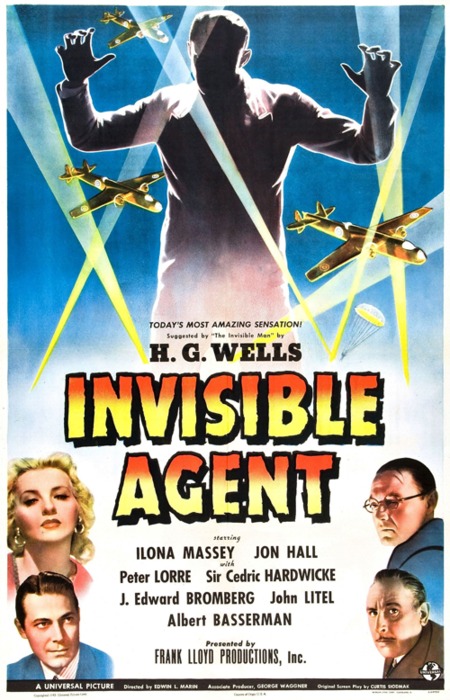
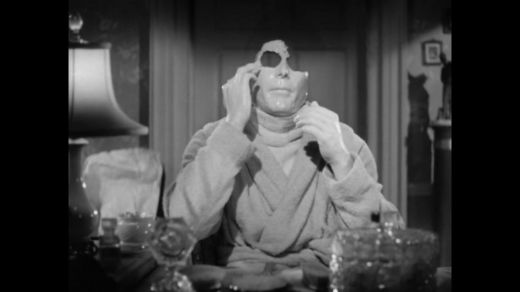
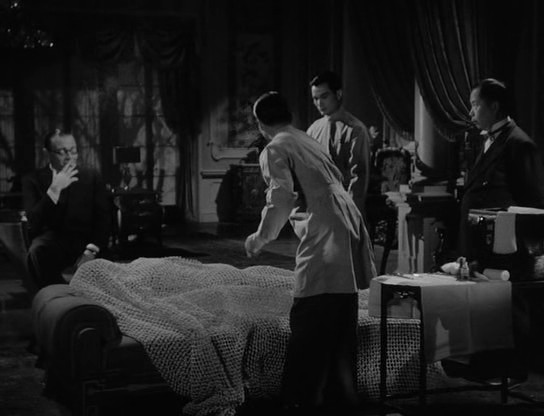

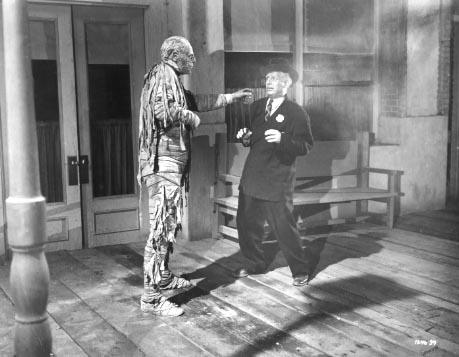


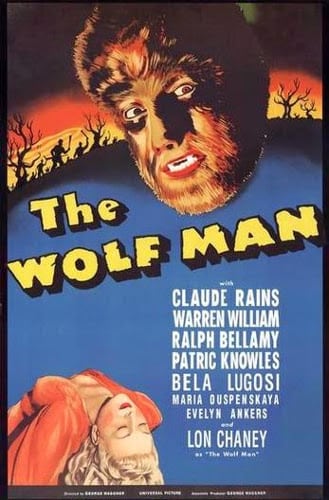

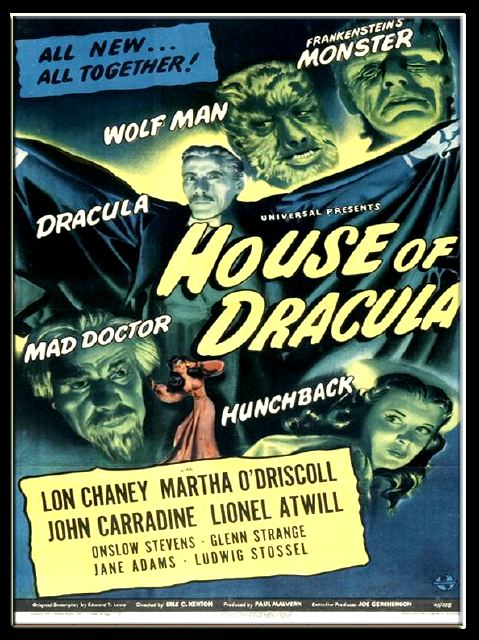
Be the first to comment